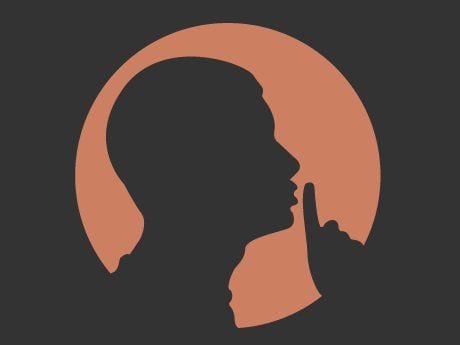Student Contributor: S. Dianda
 Signal Interference is a nonverbal Intervention that communicates that a behavior is not appropriate. It is helpful during instruction, because it lets the student who is misbehaving know that their behavior is not ok, yet it does not cause distraction to the rest of the class.
Signal Interference is a nonverbal Intervention that communicates that a behavior is not appropriate. It is helpful during instruction, because it lets the student who is misbehaving know that their behavior is not ok, yet it does not cause distraction to the rest of the class.
Signal interference acts a a cue that warns students who are showing unwelcome behavior to stop that behavior. If done correctly, the lesson does not need to be interrupted to do this. Its distraction to the other students is minimal. Simply making eye contact with the disruptive student, a slight head shake, a hand signal, or placing your fingers to your lips in a hush motion are all examples of signal interference.
Signal Interference is a tool use in the Corrective phase, because it is something that is stopping unwanted behavior in class. It is after bad behavior has begun so it is not a preventative measure and it is not supportive, because it is correcting the behavior. The theories of Influence this falls under is all three of them. They types of signals can vary but any type of teacher can use this method effectively to maintain a smooth running classroom with few distractions.
More Information –
Tool Source: Levin & Nolan,2014, p. 210



The other tool that I tested out was the signal interference which is a corrective tool. For this tool I decided to go with the silent hand because it was a lot easier than having to talk over all of the students. This was tested on the 12 students who are in my 5th grade class. The setting of the school that I am placed at is a rural school. I spent a good amount of time preparing on how I was going to use it and how I was going to teach my students how to use it and respond. When it came to me teaching the tool to my students it was fairly easy, I gave them the explanation and then we tested it out as a whole class so that they could get a visual of what I was expecting. When it came to using the silent hand with my students, it was very effective in
quitting the class. Some success that came with it is that students were getting really into it and
when they would notice that it was getting too loud and I would be waiting patiently to speak
without putting my hand up, I would see some students who would start to put their hand up and be the silent hand to quit the class. I saw this as a success because I didn’t even have to do it all the time, but the students would initiate it by getting their peers to quiet down. Most of the students understood the role, there were a couple of students that when the hands were raised, they would raise their hand and then continue talking and I would just remind the class as a whole afterwards that when they hand is up those voices are off. Some adjustments to make this better is making sure that I explain enough and go over it enough so students understand their expectations clearly.